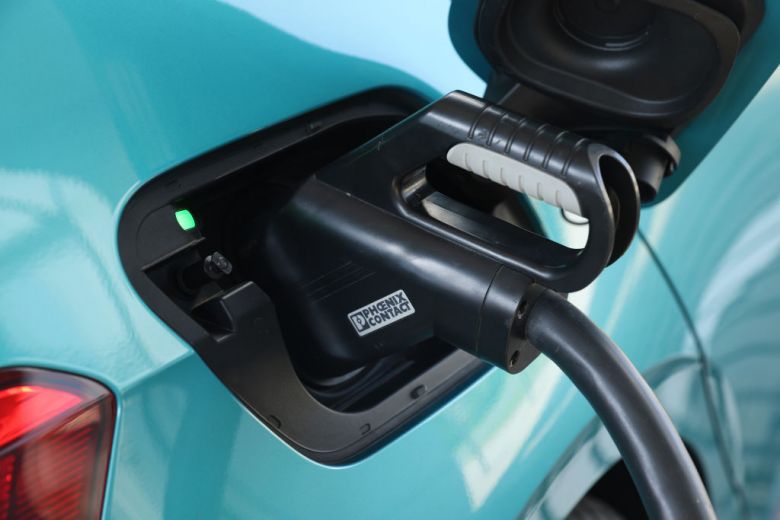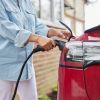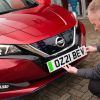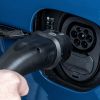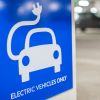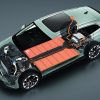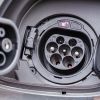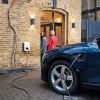While the potential range offered by electric vehicles (EVs) is improving all the time, achieving those figures in the real world also demands careful driving and some planning ahead.
Maximising range can also reduce the need to rely on the public charging network – saving you time and money.
Read on to discover how to improve electric car range and charge.
Pick the right electric car for your needs
While smaller and cheaper EVs tend to be more efficient (in miles driven per kWh), pricier models have larger batteries, and usually a longer range.
Whatever your budget, compare the range offered by your preferred EV with its rivals. There can be some very surprising differences.
Choose the right battery size
Many electric cars, such as Volkswagen's ID 3, the MG 4 and most Teslas, offer a choice of different battery sizes in the same model.
It might be worth paying extra upfront if a long range is important to you. But, remember, that a larger battery is heavier, reducing the car's overall efficiency and increasing running costs.
Battery sizes are measured in kilowatt hours (kWh) so pay attention when you see those numbers.
Choose the right EV spec
The spec or trim of your chosen EV can also affect its range. For example, larger alloy wheels have a negative impact on range, while accessories such as roof racks can increase drag and reduce efficiency in exactly the same way as they do on internal combustion-engined (ICE) cars.
It's well worth looking to see if your chosen electric car has a heat pump fitted as standard. This is a more efficient way of heating the car's cabin than a traditional heating system, reducing the impact of cold weather on range and efficiency.
Update your EV software
Depending on which EV you choose, you might gain a few extra miles of range via an over-the-air software update. Tesla, for example, has unleashed additional range from its cars on a few occasions without any hardware changes whatsoever.
Pre-condition your electric car
One benefit to driving an EV is the pre-conditioning function, which helps to preserve range, as well as enhancing comfort and convenience. What it means is that your EV’s interior can be pre-heated or pre-cooled while plugged in, using electricity from the mains to hit your preferred temperature before you begin driving.
Not only will you feel more relaxed, but the car’s driving range will be maximised and its battery life will be lengthened. The pre-conditioning function is usually activated by a smartphone app connected to the car itself, or by its infotainment system.
You can do this on demand or schedule your daily departure times, and the car’s cabin will be heated or cooled to its ideal temperature. Easy!
Plan your charging locations
Planning your route before you leave could avoid any unnecessary detours to find a charger, which will deplete your range. Apps such as Zap-Map, Chargemap, and Plugshare can filter charge points by location and type, and you can also see if a charger is available in real-time.
Electric cars fitted with Google software as standard – the Polestar 2 and the Volvo XC40 Recharge, for example – use an updated navigation system from Google Maps to help plan charging stops. If your EV doesn’t run Google software, you can still see charge points on the Google Maps smartphone app, and most EVs have charge points listed as part of their navigation systems.
The newest and most advanced electric cars will automatically locate charging stops when you enter a destination on the navigation. They'll tell you whether the station is free and functioning, and even indicate how long you need to charge for at each stop.
Consider alternate routes
It’s also worth bearing in mind that, unlike ICE cars, EVs are less efficient at motorway speeds and more efficient in town.
A constant speed, with little or no regeneration – where kinetic energy is harvested and sent back to charge the car’s battery on deceleration, potentially boosting range as you drive – depletes EV range faster, so you may want to take a more direct route on slower roads to maximise your potential distance.
Google Maps offers alternate routes with a leaf symbol to show their higher efficiency.
- Electric car charging – how it works and how much it costs
- The costs of running an electric car
- Top 12 used and new EVs

RAC sale – up to 33% off*
• Roadside cover from £5.29 a month†
• We get to most breakdowns in 60 mins or less
• Our patrols fix 4/5 breakdowns on the spot

Avoid speeds over 70mph
Following on from the point above, EV range tends to drop more dramatically at higher speeds.
This is partly because most electric cars don’t have gears – so the faster you go, the faster the motor has to spin. So whilst you shouldn’t be exceeding 70mph anyway, the closer you do get to it, the less efficient you’ll be.
Gently does it
Making the most of your EV’s rapid acceleration will also slash its predicted range. Leave Sport Mode well alone if you want to get the maximum mileage out of your battery… Eco Mode is your friend.
Be smooth
Along with reducing the need for energy-wasteful sharp braking and acceleration, looking well ahead and driving smoothly also allows your car to maximise regenerative braking. It’s stuff you should be doing anyway but now you’ll be rewarded in more range.
Get to know your regenerative braking modes
Most electric cars offer a ‘B’ mode, e-Pedal, or other selectable levels of regenerative braking – allowing for one-pedal driving. Perfect this simple technique and your progress should be as efficient and stress-free as possible.
On motorways you can also coast – where the car uses no power at all – where possible, for example down a hill, to save even more precious energy and potentially boost your EV’s range.
Optimise your climate control
Aside from driving more efficiently, there are other ways to save energy on the move. Use seat heaters and the heated steering wheel rather than warming the whole car. If you do need the air conditioning on, select the ‘driver only’ setting if your EV has one.
Again, a heat pump is desirable if fitted as standard - if it's an expensive option, you may not save enough energy to justify the price.
You can also turn off the lights and audio system when not needed, although the LED lighting used on some modern EVs affects range only marginally, if at all.
- The longest range electric cars on sale
- Electric vehicle news
- The road to electric – in charts and data
Travel light
You should also ensure your car is not carrying any unnecessary ballast (bike racks or boxes of stuff in the boot, for example) and that the tyre pressures are all correct. Again, just as you should for an ICE car.
Charge up to 80%
Charging becomes slower once an EV battery gets above 80 percent capacity – and charging beyond this level can cause the cells to degrade over time. Only charging to 80 percent could prolong the life of your EV and maintain its range in the longer term.
It also saves you time, and allows other people to use the rapid charger should there be a queue of other drivers waiting. Read our EV charging etiquette guide for additional points to consider when charging away from home.
- Electric car charging etiquette – the do’s and don’ts of EV charging
- How much does it cost to charge an electric car?
- Types of electric vehicles – EVs explained
Following these range hacks and advice should see you get as close as possible to the official range figure quoted for your electric car. You might even enjoy the challenge of driving as efficiently as possible – it can be addictive! Let us know how you get on in the comments below.
The RAC is the UK’s first breakdown assistance company to introduce a mobile charging unit for electric vehicle owners who have run out of charge.
We are the number one provider of breakdown cover for electric vehicles and our All-Wheels-Up recovery system allows our patrols to safely rescue electric cars with no need for a flatbed.
Find out more about RAC EV Boost.

